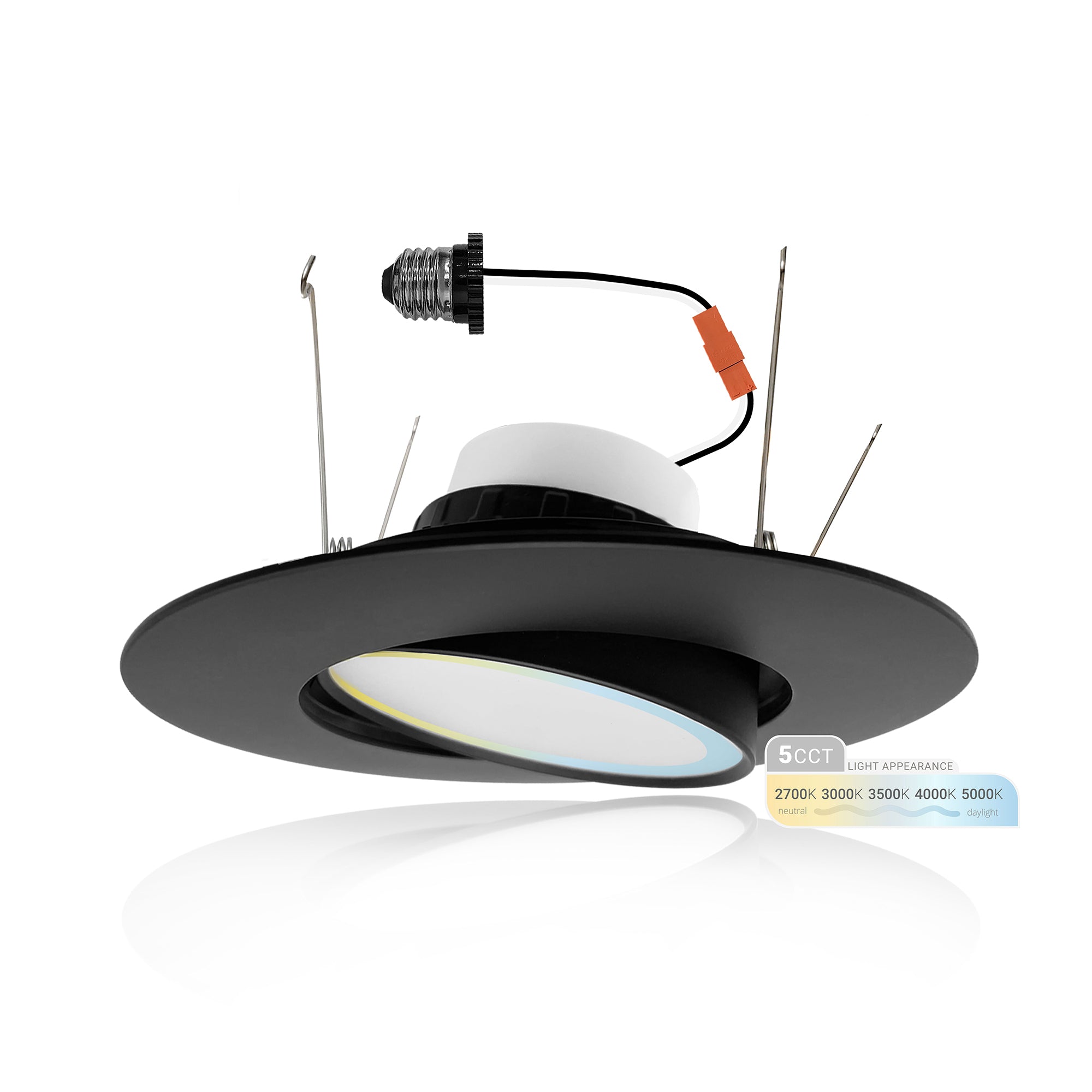Retrofit Can vs. Canless Recessed Lighting: Which is Best for Your DIY?

Thinking about renovating your kitchen or bringing some upgrades into your living room? Then you may find yourself wondering whether you should choose a retrofit can light or a canless recessed light for your project. As a seasoned electrician, I'm here to help you figure out which type of recessed lighting fits your needs. Each option has its pros and cons, and there are some important key things to know before you start your DIY project, let's dive in!
What is Retrofit Can Lighting?
Retrofit can lighting or sometimes called "can lights" or "downlights" are recessed lights that go inside can shaped housings in your ceiling. These cans or housings hold the recessed light securely in place and provide a socket or base to connect your retrofit can light to. So essentially, those cans in your ceiling are there so you can easily remove the old bulb or fixture and connect or “retrofit” a new LED can light.
If you've already got "cans" or housings installed in your ceiling, you're in great shape! All you need is the diameter (size) of the housing and base type (typically E26).

5/6 Inch Black Retrofit Adjustable LED Recessed Downlight
$32.99
Fits 5 inch or 6 inch cans. Connect as easy as screwing in a bulb.
View ProductWhat is Canless Recessed Lighting?
Unlike retrofit can lighting, canless recessed lighting is used for new constructions and finished ceilings. As their name suggests, canless LED wafer lights do not need cans to operate. The entire lighting hardware that used to be in the can is instead place in a box that's just a few inches in size. The end result is an ultra-thin lighting design that requires as little as two inches of above-ceiling space to install and can go anywhere on the ceiling. So if your home does not have canisters for recessed lights already in the ceiling, then your best bet is to go with our canless recessed lights.
How to Install Retrofit Can Lighting
Because retrofit can lighting is intended to upgrade existing incandescent or halogen recessed bulbs to LED, you need to make sure the new LED replacement matches the size of your ceiling recessed can. (If your DIY project does not have existing housing, you should install canless LED lighting instead of a retrofit). To do that, remove the bulb from the housing and measure the diameter of the can opening. This installation process is ideal for DIY projects working off of current construction sites or are only renovating lighting areas that already exist. Simply remove the existing lamp, connect the E26 or GU 5.3 base of the retrofit unit to the current fixture's socket, secure the clips, and you're good to go—no fuss, no extensive rewiring needed.

How to Install Canless Recessed Lighting
A simpler option for DIY projects that do not already have housing units is to use canless recessed lighting instead. Unlike retrofit can lighting, canless recessed lights have a more straightforward installation process. These lights connect directly to the wiring in your ceiling and come with an electrical junction box and snap in clips for easy installation. Canless recessed lighting is a great option if you’re new to DIY, are working on a completely new construction project without current housing, or just want to simplify your lighting installation process! Cut the designated hole in the drywall, wire up the junction box, snap the spring-loaded clips in place, and you've got yourself a seamlessly installed canless recessed light—no can housing required.
Retrofit Can vs. Canless Recessed Lights
A crash course to determine which type of LED lighting is right for you:

Ready to choose the lighting that’s best for you? Shop NuWatt’s extensive canless recessed lighting and retrofit can lighting collections now!

